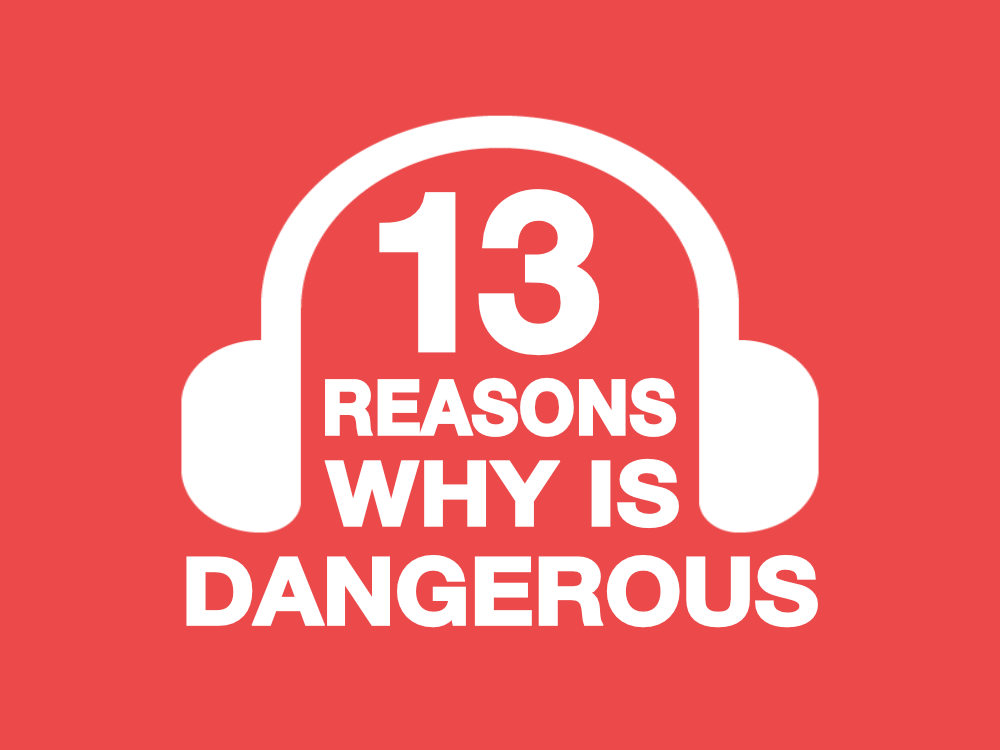The Netflix’s show “13 Reasons Why” is dangerous. It’s the story of a young woman that commits suicide. Before the suicide, she leaves behind recorded tapes explaining the reasons that pushed her to kill herself. The tapes are distributed to people in her life that contributed to her suffering, and her eventual suicide.
Here are 13 reasons why this show is dangerous:
- It illustrates suicide as reasonable.
- Illustrates suicide as a legitimate solution to suffering.
- It illustrates suicide as glamorous.
- Illustrates suicide as a way to get attention and admiration.
- Illustrates suicide as a way to get popularity and fame.
- Illustrates suicide as a way to get revenge on people that cause you suffering. In the show the main character’s suicide indeed leads to her getting revenge, as the people that hurt her endure suffering for the hurtful things they did to her, and one of them is driven to commit suicide himself, out of the guilt of having contributed to her suffering, and the effects that followed her suicide.
- Presents the main character as helpless and powerless, withstanding pain and abuse without reaching out for help, and when she finally does, the professional helper that she reaches out to is portrayed as an ineffective, self-absorbed, and careless counselor.
- Portrays both parents and professional helpers as out of touch, self-absorbed and inefficient problem solvers who deserve no trust, and from whom true problems are supposed to be hidden.
- Portrays dependency as normal. The rejection of peers is enough to want to kill yourself.
- Portrays lack of self-esteem. The poor character feels that she is incapable of love and affection—in spite of being smart, beautiful, articulate, and possessing a smart and witty sense of humor, yet, she is incapable of being aware of any of these attributes in her view of herself. I understand that it can be argued that teenagers suffer from such lack of self-esteem and self-doubt, but the message that suicide is a possible avenue to deal with it is dangerous.
- Most dangerous of all, It plays to the fantasy of every person, especially a young person that considers suicide. One of the irrational fantasies that make suicide appealing is the illusion that somehow the person that commits suicide will be able to see the effects that their suicide has on others: their peers recognizing, and mourning for them, the moving memorials erected for them, and the suffering of the people that hurt them. In the show, these things actually happen, and her voice and image are present throughout the aftereffect of her suicide, and she witnesses the effect that it has on others.
- The argument of the makers of the show that making the actual suicide scene gruesome is a deterrent to suicide, is the same reasoning that I encountered in high school that said that showing me pictures of tar covered cancerous lungs would serve as deterrent to smoking: it wasn’t, It didn’t stop me, or anyone else that I know from smoking. When children were exposed to the dangers of drugs with the “DARE” anti-drug campaigns, the result was that the campaign drew attention to drugs, and created curiosity about using drugs, not prevent it.
- It fails to provide answers. It presents a hopeless and powerless stance when facing adversity, and disloyal, treacherous, and narcissistic characters as an example of our young people. Worst of all, it fails to assert the human attributes of courage in the face of adversity that is inherent in the human potential. It fails miserably to put in view the heroic potential of humanity. A heroic potential that has been inherent in the art, myths, and legends that have inspired our the survival instinct of our race, not its self-destruction.

